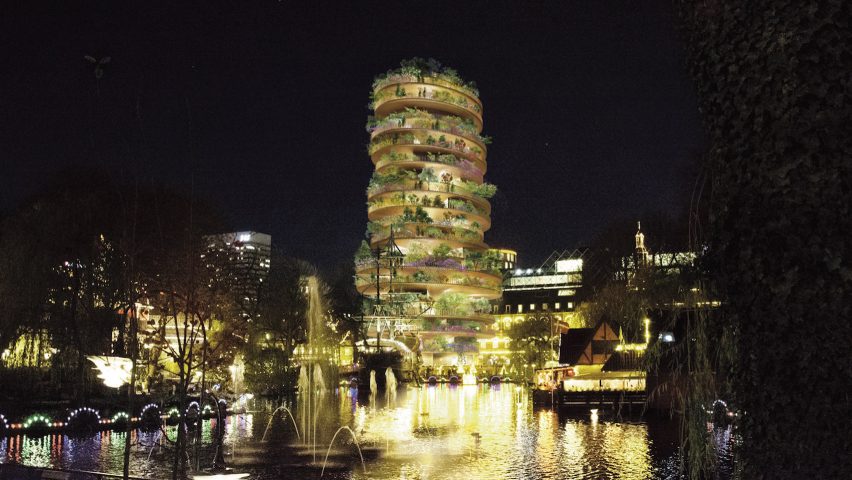BIG has revealed visuals of the "whimsical" plant-covered H C Andersen Hotel it has designed for the Tivoli Gardens amusement park in Copenhagen.
Named after the Danish author Hans Christian Andersen, the hotel will consist of a stack of 18 misaligned storeys that extend from Tivoli Castle – the theme park's event venue that BIG will also renovate as part of the project.
This playful pagoda-like form is intended to combine Tivoli's "old-world charm with visionary architecture". It will be wrapped with plant-filled balconies that nod to the pleasure gardens.
"With a renovation of the 1893 Tivoli Castle and the addition of a new building, we have attempted to capture and accentuate the character of the existing castle, creating a new typology inspired by Tivoli's archetypical architecture," explained BIG's founder Bjarke Ingels.
"A hybrid between the garden's pagodas, pavilions and towers, our proposal builds a bridge between the city's history and present – the nearby Rundetårn and Axel Towers – as well as the city's archive of unrealised dreams."
Located in central Copenhagen, Tivoli is an amusement park founded by Georg Carstensen in 1843, in the model of 19th-century European pleasure gardens and parks.
Today, it hosts a mix of rides and live entertainment venues housed in an array of buildings that are enveloped by flower gardens.
It is hoped that the hotel will help the park "stay relevant" as an entertainment destination for a new audience. It will be designed by BIG to function as sustainably as possible once built, and will rely on renewable energy.
"Only through projects such as this can Tivoli stay relevant for future visitors. It has been proven time and time again, that depending on Tivoli's historic charm is not enough," added Tivoli CEO Lars Liebst.
"Change is in Tivoli's DNA, it is our heritage, and Tivoli has always hired the best architects to make sure that new additions will stand the test of time, because we are building for the future."
Founded by Bjarke Ingels in 2005, BIG is an architecture practice with studios in Copenhagen, New York, London and Barcelona.
Alongside its proposal for the H C Andersen Hotel, the studio's latest projects include its conversion of a 1930s bank into Galeries Lafayette, a Massachusetts university building with copper walls, and a vortex-shaped education centre in the Faroe Islands' capital.

